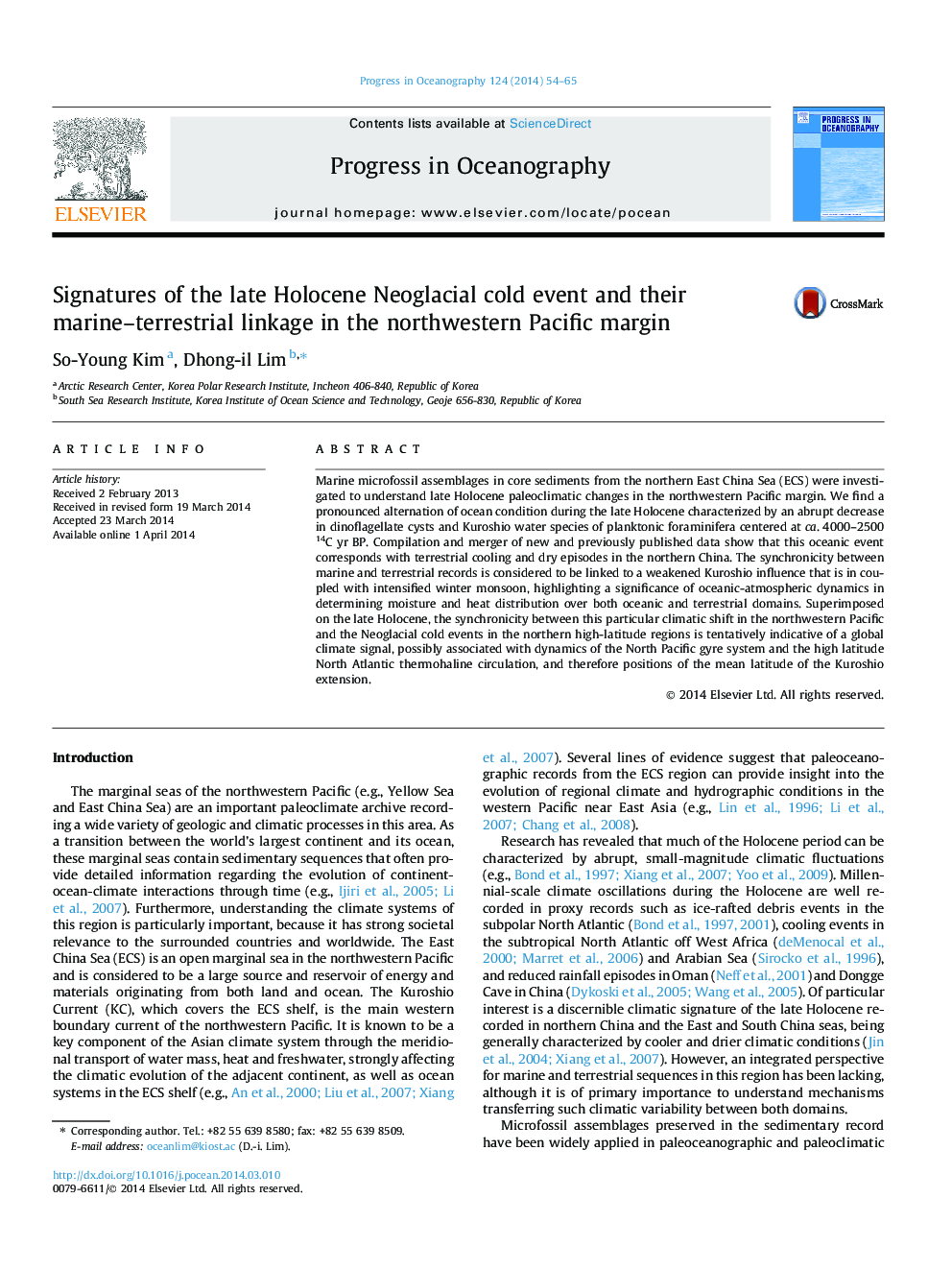| Article ID | Journal | Published Year | Pages | File Type |
|---|---|---|---|---|
| 6388714 | Progress in Oceanography | 2014 | 12 Pages |
â¢Marine microfossils record an alternation of ocean condition during the late Holocene.â¢The oceanic event corresponds with terrestrial cooling and dry episodes.â¢The ocean-land synchronicity can be explained by a weakened Kuroshio influence.â¢The climatic shift in the northwestern Pacific corresponds to the Neoglacial cold events.â¢The global ocean circulation system explains the late Holocene climatic synchronicity.
Marine microfossil assemblages in core sediments from the northern East China Sea (ECS) were investigated to understand late Holocene paleoclimatic changes in the northwestern Pacific margin. We find a pronounced alternation of ocean condition during the late Holocene characterized by an abrupt decrease in dinoflagellate cysts and Kuroshio water species of planktonic foraminifera centered at ca. 4000-2500 14C yr BP. Compilation and merger of new and previously published data show that this oceanic event corresponds with terrestrial cooling and dry episodes in the northern China. The synchronicity between marine and terrestrial records is considered to be linked to a weakened Kuroshio influence that is in coupled with intensified winter monsoon, highlighting a significance of oceanic-atmospheric dynamics in determining moisture and heat distribution over both oceanic and terrestrial domains. Superimposed on the late Holocene, the synchronicity between this particular climatic shift in the northwestern Pacific and the Neoglacial cold events in the northern high-latitude regions is tentatively indicative of a global climate signal, possibly associated with dynamics of the North Pacific gyre system and the high latitude North Atlantic thermohaline circulation, and therefore positions of the mean latitude of the Kuroshio extension.
